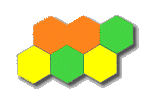
Terra Cognita in Current Perspective
Purpose
Terra Cognita is a research laboratory in
the Department of
Geosciences at Oregon State
University that specializes in the application of spatial analysis methods,
advanced visualization techniques, and high-performance computing to research problems in geography and geology. The laboratory serves graduate student and faculty research in the department.
Current Activities
In cooperation with local government, federal government, academia and
industry, Terra Cognita participates in the development
the Virtual
Oregon Natural Resources Data Clearinghouse, a resource for innovations
in the cataloging and distribution of place-based (geospatial) environmental data of Oregon, along with education and outreach throughout the state on how best to incorporate various data sets, images, and geospatial tools into classroom teaching and environmental activism.
In conjunction with the
Transboundary
Freshwater Dispute Database, researchers are developing the
Transboundary Freshwater Spatial Database, consisting of biophysical,
socioeconomic, and geopolitical data relating to the world's international river basins that are accessible and searchable through spatial and tabular formats.
In conjunction with the Davey
Jones Locker seafloor mapping and marine/coastal
GIS lab, researchers are developing a benthic habitat classification scheme
and GIS tools for American Samoa coral reefs, using multibeam bathymetry and submersible dive videography. Also in development are educational and outreach resources about coral reefs in American Samoa, including the Fagatele Bay National
Marine Sanctuary and the National Park of American Samoa. Researchers are
also collaborating with the Hawai'i Mapping Research
Group on the development of the Arctic Archive for Geophysical Research: Unlocking Undersea Knowledge.
The Global Grid Project, sponsored by the US EPA, addresses improved cartographic methods for sampling and analyzing environmental phenomena across the globe. We are studying the performance of alternative ways to partition the globe into sample units.
Equipment
The core of the laboratory computing facility consists of eight Dell workstations, including five dual processor workstations, three single processor workstations, and a Dell web server. This computing core is supplemented by high-resolution monochrome and color printers, two large-format color plotters, and a color flatbed scanner. An underlying Active Directory network supports connectivity needs for all equipment.
Admittedly, we are conspicuous consumers of software, and some of the products that help us are:
- ArcGIS 9.x and ArcView 3.3 - GIS
- ENVI and ERDAS Imagine - image processing systems/GIS
- IDL - image processing/programming language
- ArcIMS - internet map services
- Apache web server
- Fledermaus (Interactive Visualization System) - 3-D scientific visualization
- S-Plus - statistical programming system
- Adobe Framemaker - document preparation and publication system
- Adobe Design Collection - web development and visualization
- Macromedia Studio MX - web development and visualization
- Wolfram's Mathematica - numerical analysis, mathematical modeling
- Matlab - numerical analysis, mathematical modeling
- Surfer - data analysis, graphing
Access
Use of Terra Cognita is governed by the Terra Cognita Advisory Group.
Students should discuss their access needs with
S. Mark Meyers. Requirements for acceptable projects include
graduate, faculty, or staff status in the College of Science and
sponsorship of a contributing member of the Advisory Group.





Home | Personnel | Data | Projects | Spinoff










